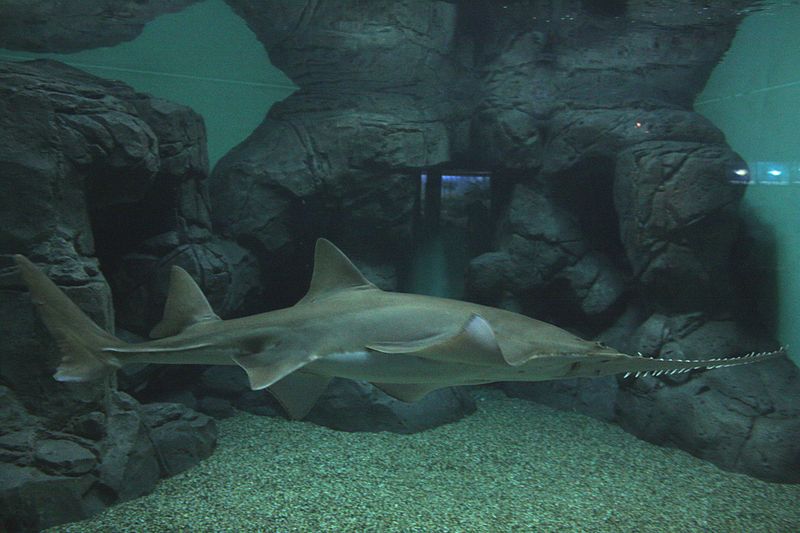Summary of Endangered Smalltooth Sawfish Tagged Off Coast Florida Hints Possible Comeback in First Sighting After 20 Years:
An endangered smalltooth sawfish was recently tagged off the coast of Florida after 20 years. The sighting suggests that the species may be on the road to recovery. The smalltooth sawfish was declared endangered in 2003 due to habitat degradation, overfishing, and being caught unintentionally in fishing nets. The recent tagging of an adult female sawfish hints at a slow recovery for the species. The tagging is part of an initiative to track sawfish populations and will allow researchers to monitor the animal’s movements for the next ten years. The scientists also discovered scars from mating on the sawfish, indicating their numbers are increasing.
*****
Summary:
– An endangered smalltooth sawfish was recently tagged off the coast of Florida after 20 years, indicating a possible recovery for the species.
– The smalltooth sawfish is a native marine species declared endangered in 2003.
– The decline in smalltooth sawfish populations is primarily due to habitat loss and unintentional capture in fishing operations.
– The tagging of the sawfish will help track its movements and contribute to ongoing efforts to conserve the species.
1. Introduction
The recent tagging of an endangered smalltooth sawfish off the coast of Florida has brought hope for the recovery of this unique species. After a gap of 20 years, the sighting of this fish suggests that conservation efforts may be paying off. This article will explore the fascinating aspects of the smalltooth sawfish and the significance of this recent sighting.
2. The endangered smalltooth sawfish
The smalltooth sawfish, known for its distinctive saw-like snout, was declared endangered under the Endangered Species Act in 2003. Over the years, its population has rapidly declined due to habitat loss and unintentional capture in fishing operations. Coastal development and entanglement in nets have been particularly detrimental to the species.
3. The recent tagging
During an annual shark field course, researchers from the Florida Museum of Natural History and Florida State University’s Coastal and Marine Laboratory made a remarkable discovery. They caught, tagged, and released an adult female smalltooth sawfish measuring 13 feet long. This sighting is significant as it represents the farthest location north that the recovery team has tagged an individual in the past few decades.
4. Slow pace of recovery
The tagging of the smalltooth sawfish hints at a slow but steady recovery for the species. Gavin Naylor, the director of the Florida Museum of Natural History’s shark research program, believes this sighting is an encouraging sign. After years of dwindling populations, the mating scars on the tagged fish indicate their numbers may slowly increase.
5. Tracking the sawfish populations
The tagging of the smalltooth sawfish is part of a larger initiative by federal and state authorities, colleges, and non-governmental organizations to track their populations. The tag will allow researchers to monitor the movements and behaviors of the sawfish for the next ten years. This data will contribute to ongoing conservation efforts for the species.
6. Unique mating behaviors
Although there is limited information on the mating behaviors of smalltooth sawfish, the presence of mating scars on the tagged fish provides valuable insights. Related species like rays and sharks exhibit wooing behaviors involving males biting the female partners’ fins before mating. The discovery of these scars suggests that the smalltooth sawfish populations are still increasing.
7. Long life cycle and slow growth
The smalltooth sawfish has a long life cycle, with females giving birth to a modest litter of seven to fourteen young. It takes several years for these young individuals to reach reproductive age, contributing to the slow recovery of the species. However, the recent tagging and mating scars indicate that their numbers are gradually increasing.
8. Conclusion
The recent sighting and tagging of an endangered smalltooth sawfish off the coast of Florida offer hope for the recovery of this remarkable species. The efforts by conservationists, researchers, and organizations to track and protect their populations are starting to show positive results. By understanding their unique behaviors and addressing their threats, we can contribute to the conservation and eventual comeback of the small-tooth sawfish.

